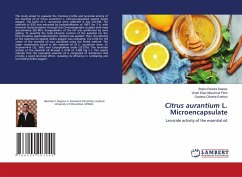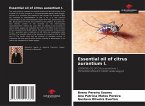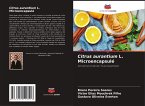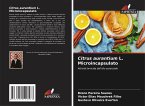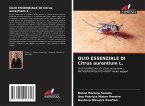This study aimed to evaluate the chemical profile and larvicidal activity of the essential oil of Citrus aurantium L. microencapsulated against Aedes aegypti. The barks of C. aurantium were collected in São Luís-MA. The essential oil (EO) was extracted by hydrodistillation at 100°C for 3 h, with chemical characterization through Gas Chromatography coupled with mass spectrometry (GC-MS). Encapsulation of the EO was performed by ionic gelling. To quantify the total phenolic content of the essential oil, the Folin-Ciocalteu spectrophotometric method was applied. Then, the lethality of the essential oil against Aedes aegypti was evaluated, the LC50 for the action of the essential oil was calculated using the Probit method. The major constituents found in the essential oil of C. aurantium were: (-)-Terpinen-4-ol (32, 56%) and Caryophyllene oxide (23.52%). The larvicidal activity of the essential oil showed a LC50 of 3.589 mg L-1. The results indicate that the evaluated essential oil is composed of substances that provide a good larvicidal effect, revealing its efficiency in combating and controlling Aedes aegypti.
Bitte wählen Sie Ihr Anliegen aus.
Rechnungen
Retourenschein anfordern
Bestellstatus
Storno

